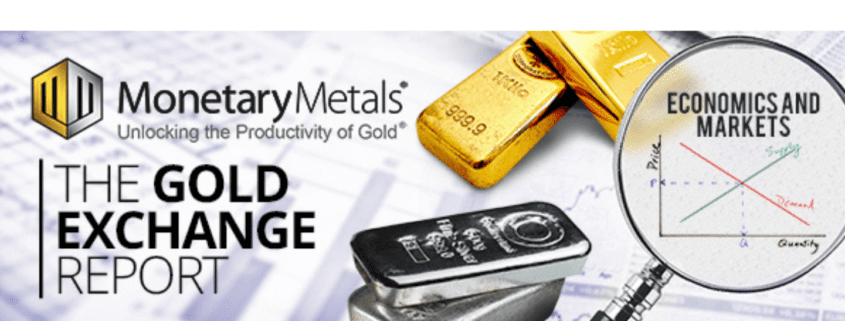The yield on the 10-year bond recently fell below the rate paid by the Fed on bank reserves. That is, a bank gets paid more to lend to the Fed for a day than to lend to the Treasury for ten years. There is not merely an inversion between the 2-year and the 10-year bonds. Nor even the 3-month and 10-year. Now the overnight and 10-year bond are inverted.
Crazy.
Where the Mainstream Goes Awry
The mainstream view is that the yield of the 10-year bond predicts that the Federal Reserve will pivot, and reverse their course of rate hikes. This view is based on the assumption that the interest rate could be any level that free actors may set in a free market. That traders have a choice to hold bonds, or not.
Most people picture themselves, deciding whether to buy a bond vs, other things into which they could put their capital. They may even choose to hold cash, if they think rates are headed higher (rate is the inverse of bond price, if rates are rising then bond prices are falling and traders would want to sell before then). So logically, everyone should want to hold cash rather than bonds.
This would make sense in a gold standard (assuming interest rates were unstable in a gold standard, which they are not). Anyone would prefer the gold coin to a bond paying too little return. In the gold standard, one does not buy gold. One redeems a bond or a bank deposit. Redemption is a contractual right of the holder, and obligation of the issuer. The saver gave the issuer a gold coin in the first place, and redemption is simply the right to get back the gold. Redemption reduces funding to the issuer. The saver has the power to force credit to contract, if he does not like the terms or the risk.
But in irredeemable paper currency, there is no redemption. The idea that everyone could sell bonds is meaningless. To hold a money balance—dollars—is to be a creditor. Your choice is to lend to the Treasury directly via buying a bond, or to lend to the Treasury indirectly. You can lend indirectly by either holding paper dollar bills (aka Federal Reserve Notes), or by depositing the cash in a bank. The Fed and the banks use money to buy Treasury bonds. That is, you give them credit, and they extend this credit on to the Treasury.
You can buy gold, but that has no effect on the monetary system. The seller gets your dollars, and the banking system merely updates the name on the dollar deposit. It does not reduce credit to the banking system. It does not affect the interest rate.
There can be a shifting of Treasury bonds around the monetary system, from individuals to banks to the Fed. But not a net sell-off.
“Wait,” you say. “How is this different than the gold standard?”
The Circular Logic of the Dollar Bond
In the gold standard, the bond is created when savers give gold to the issuer in exchange for a promise to get that gold back (plus interest). The existence of the gold is not contingent on the bond in any way. Quite the opposite, there can be no bond without willing depositors of gold.
By contrast, in irredeemable currency, the dollar is issued to fund the purchase of the bond. Which is issued to raise dollars. It’s self-referential. Circular. The dollar is contingent on the bond.
There is all the difference in the world between a gold coin and any promise to pay a gold coin, no matter the maturity. But what is the difference between a dollar credit of one day vs one year or thirty years? Only their respective durations.[i]
Using Magic to Set the Dollar Interest Rate
In irredeemable currency, the interest rate is arbitrary. It could collapse to zero (or beyond) or shoot the moon. And it has, in the decades following the world’s plunge into this mad regime in 1971.
In the gold standard, the interest rate is the spread between the gold coin and the gold bond. The more bonds issued, the more coins must be drawn in, the higher the interest rate must go in order to draw in still more gold from the next marginal saver. Sure, the bond issuer spends the coins, but only some of those spent coins end up in the hands of long-term savers. This is a perfect brake on credit expansion.
In irredeemable currency, the overnight interest rate is the spread between the central bank’s liability and its asset. The Fed can buy or sell bonds. Credit can expand at the Fed’s sole discretion. But here’s the real magic. The interest rate does not depend on the Fed’s choice to expand or contract. We had a long period of credit expansion and rising interest rates after WWII through 1981. And we had an even longer period of credit expansion and falling interest rates since 1981. Unsurprisingly, there are no long periods of credit contraction. This is for the obvious reason that the government prefers to get more free money to spend. And for the not-so-obvious reason that the system depends on ever-faster expansion of credit in order to exist.
The point in this essay is not to discuss how the interest rate is set.[ii]
The cap on the long-term interest rate is the return on long-term business assets. If businesses cannot develop projects that generate returns of, say, 8%, then they cannot bid up the interest rate to, say, 5% (they need a spread between cost and expected return, especially considering the risk that the expected return will not be realized). The prospects for generating return on such investment have been under compression since 1981, heading ultimately towards the heat death of the economic universe.
You are Not a Pension Fund
The first point is that the rate is not simply a matter of the marginal saver expressing his preference. Nor the traders coming to some sort of consensus of the right rate. The long-term rate is not a prediction of what short-term rates will be, at the moment when a long-term bond matures.
The next point is that the market is not dominated by people like you. You may have a choice to jump into this asset or that. But you have not built a balance sheet on leverage. You do not have a charter to carry a mix of short- and long-term liabilities, hence forced to load up on a corresponding set of short- and long-term assets.
A pension fund is not like you. I don’t just mean that you’re nimble, and they are the bag holders. I don’t just mean that they suffer execution slippage on every trade, when they buy, they drive the price up and when they sell they push it down. Though these things are true.
I mean that their actions are dictated by their circumstances, and often forced. If they have borrowed a billion by issuing short-term instruments, then they must keep rolling over those instruments as they mature. If they issued these instruments to fund a billion dollars’ worth of long-term assets, then they have a second consideration. The spread between their cost of funding and the interest income they receive on their asset can move around.
The interest income is not changing, as the asset is long-term. Though its market price is, in response to interest rates. The value of their liabilities does not change, but the interest expense does. If rates are rising, then the cost of funding is rising with a short lag. And the value of the asset is falling with no lag. This is a problem. The fund may have to liquidate the asset at a loss, to pay off its liability (this happened recently in the UK).
So not only is the interest rate volatile in irredeemable currency, but that volatility causes other ripples which feed back into creating further volatility.
Why would a pension fund buy long-term bonds, especially when the rate of return on short-dated instruments is higher? You wouldn’t, so why would they?
You don’t have long-term liabilities. For example, you are not on the hook to pay pensions a decade from now. They are. So they must try to match the duration of their assets to the duration of their liabilities.
The Inherent Dangers of the Prediction Business
They are not in the prediction business. They are not saying “well, we think rates will go down so let’s buy long-term bonds now.” They are saying “let’s match our book, so that we do not have duration exposure.” It is not dissimilar to a bullion dealer who borrows a million dollars to fund a million dollars’ worth of inventory, He is not predicting that the gold price will crash when he shorts a million dollars’ worth of gold futures. He is hedging, so he can sleep at night (assuming he is not leasing gold from Monetary Metals, which eliminates this risk and hence the need for hedging).
The pension fund, and the bullion dealer, are price takers. They are not fishing in the market, with a low bid, waiting to see if the price will move to them. The pension fund needs an inventory of long-term assets, and the bullion dealer needs an inventory of coins and bars. They go to the market and pay the offer price.
Enter the Fed
You can think of a falling long-term interest rate as a symptom of late-stage central banking and irredeemable currencyism. Businesses across the economy continually expect lower and lower returns on long-term investments, hence keep lowering their bid on long-term interest rates. At the same time, there is chronic proliferation of long-term pension, insurance, and other liabilities. The balance sheets where these liabilities occur need long-term assets to match. Hence keep raising their bid price on bonds. which is the same as lowering their offer on interest rates.
Presto abracadabra, and voila. Bid and offer on long-term rates are in secular decline.
Enter, the Fed. The Fed thinks to push up interest rates (today, we won’t go into why their theory that this will reduce consumer prices, is not even wrong). The Fed can push up short-term rates. But it cannot increase corporations’ appetite for debt at higher rates. It cannot decrease institutions’ appetite for bonds at lower rates.
So the Fed pushes up short-term rates. Initially long-term rates go up, but only because traders believe the Fed can do these things. However, like is so often the case with these things, traders hope to front-run a tsunami of big balance sheets moving to the other side of the ocean. But end up front-running only themselves. After an initial surge in long-term rates—which was less than the Fed-driven hike in short-term rates—long-term rates do not seem to want to go higher.
The Fed has the power to invert the yield curve, causing pain for the banks (who borrow short to lend long), and precipitating crises in many other places as a result of banks’ increased reluctance to extend credit and even pull back credit.
The Fed may be the single most powerful rocket in the economic universe. But where will it go when that universe is moving inexorably towards heat death?
[i] This is why it is so difficult and so contentious to define the right measure of the money supply. It is an exercise of trying to differentiate different kinds of things, but those things only differ by degree.
[ii] See Theory of Interest and Prices in Irredeemable Currency, by Keith Weiner


 :
:

